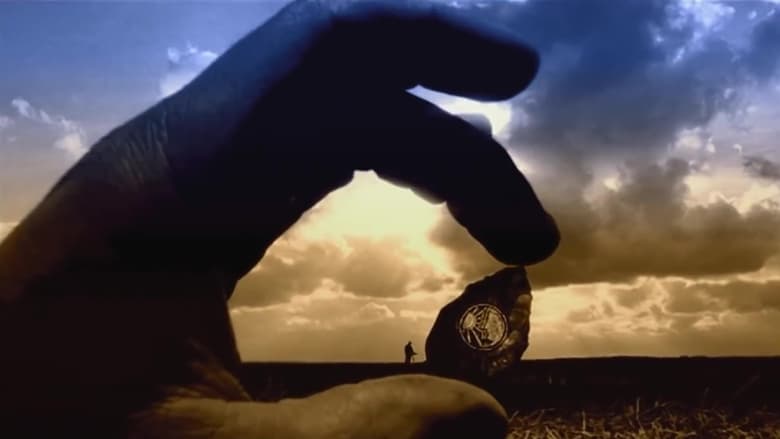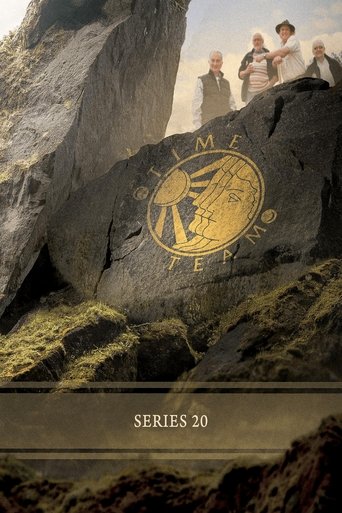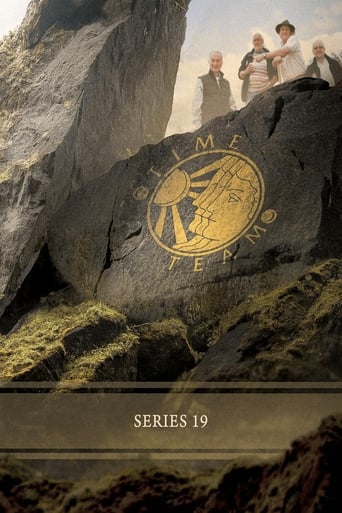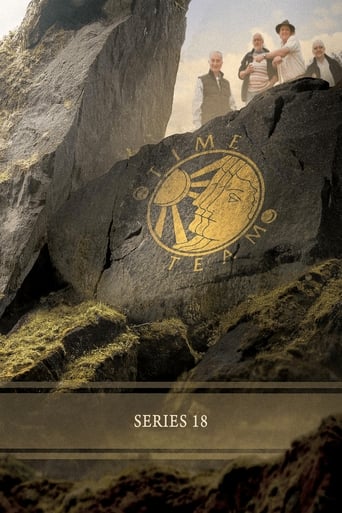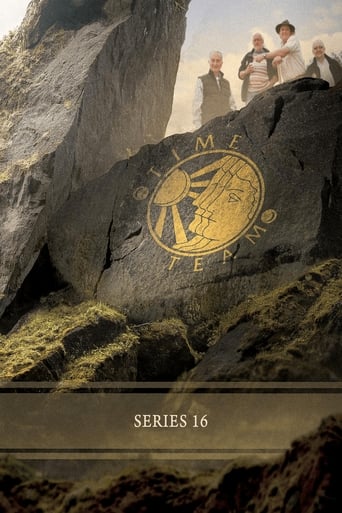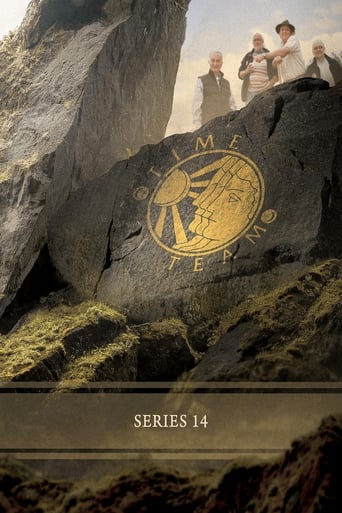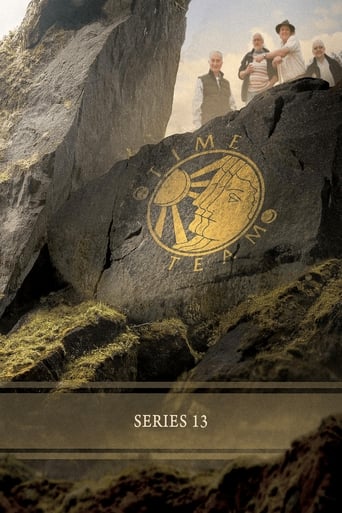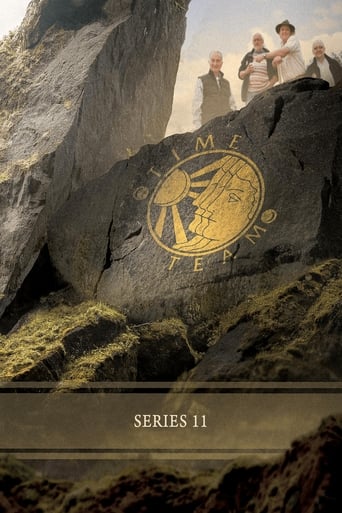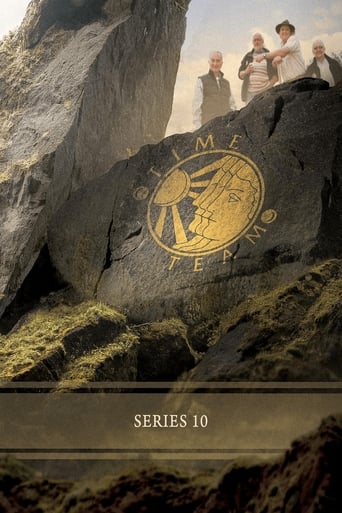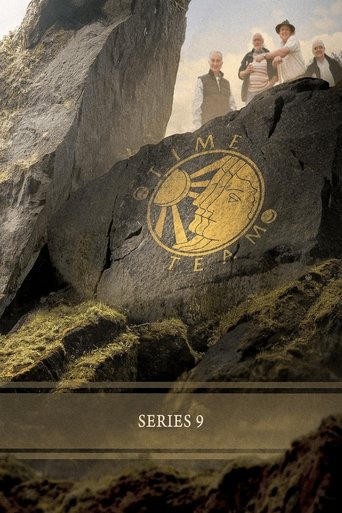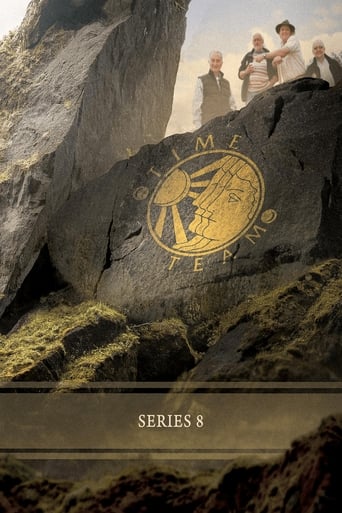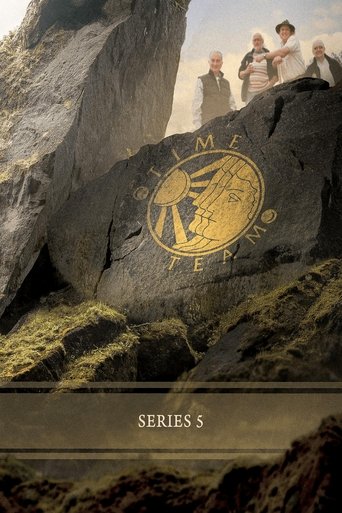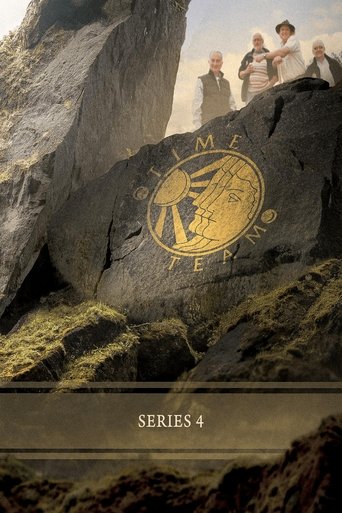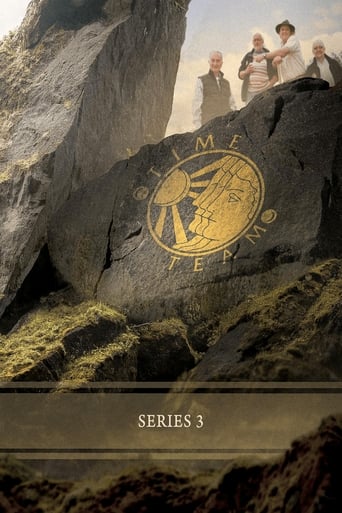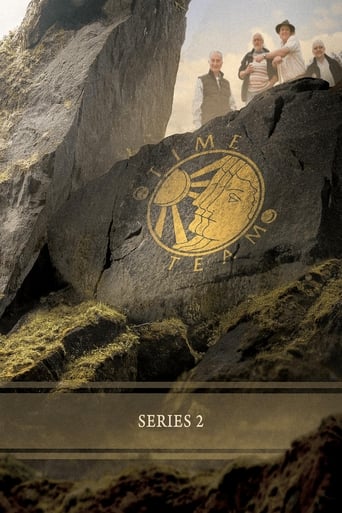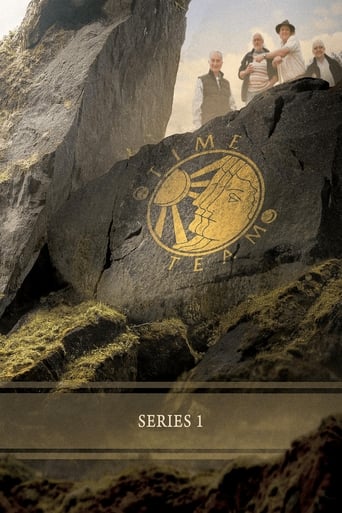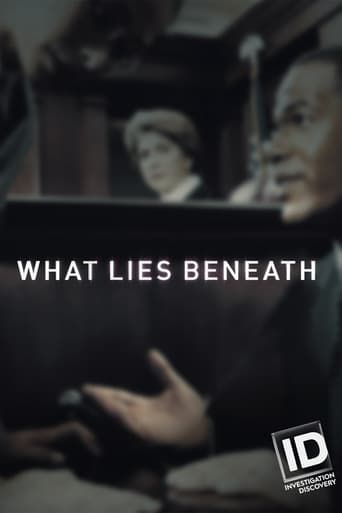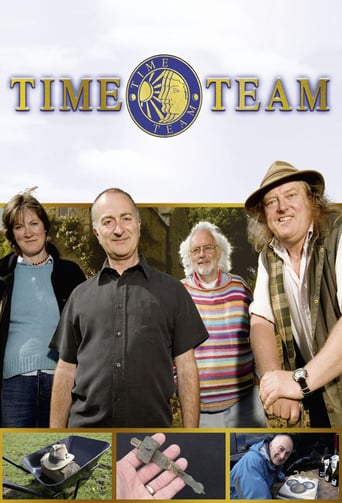
Trailer
Synopsis
Time Team is a British television series which has been aired on British Channel 4 from 1994. Created by television producer Tim Taylor and presented by actor Tony Robinson, each episode featured a team of specialists carrying out an archaeological dig over a period of three days, with Robinson explaining the process in layman's terms. This team of specialists changed throughout the series' run, although has consistently included professional archaeologists such as Mick Aston, Carenza Lewis, Francis Pryor and Phil Harding. The sites excavated over the show's run have ranged in date from the Palaeolithic right through to the Second World War.
Episode 13 : Brimming with Remains - Cranborne Chase, Dorset
March. 28,2004

Pigs rooting in a windswept field in Dorset unearthed fragments including Roman mosaic floor tiles. In addition, a Bournemouth University excavation team located some burials nearby. The farmer, Simon Meaden, has asked Time Team to investigate further. John's geophysics survey reveals a lot of activity. Very soon multiple finds start appearing, and to Tony's delight he is allowed to dig up a little beaker. Archaeologist Mike Parker Pearson produces a timeline of prehistoric and historic burial practices. Phil's trench is invaded by chickens. Gradually a complex picture emerges of human activity here over thousands of years, including a heated Roman villa with bath-house.
Episode 12 : The Lost City of Roxburgh - Roxburgh, Scottish Borders
March. 21,2004
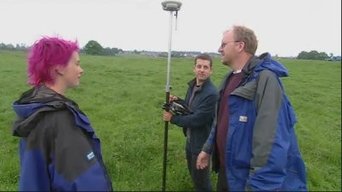
Time Team search for a Roman Villa complex on a 1950s housing estate in Ipswich. It should be easy as it was previously dug by an amateur archaeologist before the estate was built but his records and methods may not be all they seem.
Episode 11 : Back-Garden Archaeology: Revisiting a Roman Villa - Ipswich, Suffolk
March. 14,2004
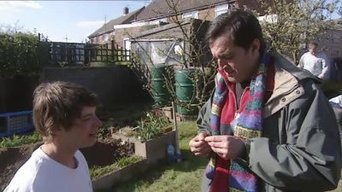
As renowned Suffolk archaeologist Basil Brown discovered, Castle Hill near Ipswich is named, not after a castle, but a substantial Roman villa. Brown was unable to complete his excavation, and Time Team have been called in by local schoolchildren to find out more. However, they will need to dig up a few back gardens to do so. Very soon it becomes clear that Brown's measurements were out of kilter. Halfway through day two, Phil makes a breakthrough. But not until 11 trenches are dug in 8 gardens does a full picture emerge. The team are joined by Roman specialist David Neale and site director Miles Russe
Episode 10 : King Cnut's Manor - Nassington, Northamptonshire
March. 07,2004
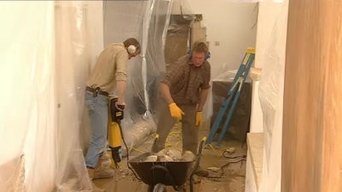
Digging up fields and car parks and back gardens is all very well, but how could Time Team pass up a chance to dig up a living room? The manor house in Nassington was purchased in a derelict state, and while restoring it, several massive post holes were investigated that are of a size and spacing to be a Saxon great hall. The pottery finds from the property suggest almost constant occupation from the Iron Age to the present, and the Ramsey Chronicle records that Cnut owned Nassington while king. Up comes the flooring so three trenches can be dug inside the house, while outside, various trenches are dug in the garden. It seems that hall after hall was built where the manor house still stands, but no trace can any longer be found of outbuildings which must have been there. Graeme Lawson visits with a selection of Dark Ages musical instruments, makes a reed pipe of elder wood, and plays out the episode with the Time Team theme music on pipe and lyre.
Episode 9 : Fertile Soils, Rich Archaeology - Wittenham Clumps, Oxfordshire
February. 29,2004

The British landscape is littered with Iron Age hill forts. A local archaeology unit is digging such a hill fort in Oxfordshire, but cannot afford to investigate a neighbouring larger hill, only 200 metres away. Both Roman and Iron Age remains have been found there in the past. But what is its relationship, if any, to the hill fort? The geophysics team identify a potential target, a square enclosure on the side of the hill. But before they can begin, they have to manually search the site for specimens of great crested newt, a rare protected species. At the beginning of day two, John's team find something which could be very special, a Roman church, apparently with a semicircular apse. They are joined by Tim Allen of Oxford Archaeology and osteoarchaeologist Angela Boyle.
Episode 8 : Rescuing a Mesolithic Foreshore - Goldcliff, Newport
February. 22,2004
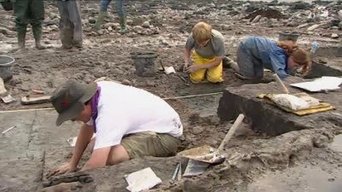
When the tide recedes at this point on the Severn estuary, rare evidence of stone age activity is uncovered. Time Team are on a three-day mission to help recover some of these relics before they are washed away. It involves excavating and painstakingly examining 15 cubic metres of muddy silt; but time is against them. The Mesolithic period is poorly understood, because these people were highly mobile hunter-gatherers who did not build permanent structures. They uncover some of the smallest artefacts they have ever handled. Phil and Brigid are fascinated by ancient footprints of adults and children, preserved in the sand. Phil excavates the massive tooth of an aurochs, an extinct giant prey animal. They are joined by Martin Bell of Reading University, Mesolithic specialists Nick Barton and Robin Crompton, and food expert Jacqui Wilson who cooks up a stone age feast.
Episode 7 : A Medieval Blast Furnace - The Old Furnace, Oakamoor, Staffordshire
February. 15,2004
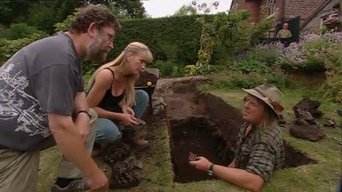
The team are revisiting the garden of Furnace Cottage in Churnet Valley, where the previous excavation of an Elizabethan blast furnace produced evidence of much earlier iron-making. Stewart surveys the landscape, to piece together a picture of water flow and other features essential to iron smelting. But John is convinced that there is strong geophysical evidence for a furnace a mile away at Eastwall Farm. It could even be water-powered - a major discovery. They build a medieval style bloomery. They are joined by historian Pete Brown, and archaeologists David Cranstone, Bill Klemperer, Deb Ford, Gerry McDonnell, Tim Young.
Episode 6 : An Iron-Age Trading Centre - Green Island, Dorset
February. 08,2004

Green Island in Poole Harbour has already shown that it was a significant centre of Iron Age activity, with evidence of industrial activity and trading to and from the continental mainland. But it has never been properly excavated. Two huge jetties - now buried - indicate either a port or a defensive structure. The island is a SSSI (Site of Special Scientific Interest), which means hand-digging only, and replacing the topsoil. Very soon the finds start to multiply. Of particular interest is evidence of shale working for jewelry, and iron smithing. They are joined by Project Director Eileen Wilkes, archaeologist Miles Russell, Iron Age specialist John Collis, and metallurgist Roger Doonan. Experimental archaeologist Jake Keenan demonstrates shale working with primitive tools. Geomorphologist Vincent May explains that in prehistoric times the water level was two metres lower, and Green Island was much bigger.
Episode 5 : The Roman Fort That Wasn't There - Syndale, Kent
February. 01,2004
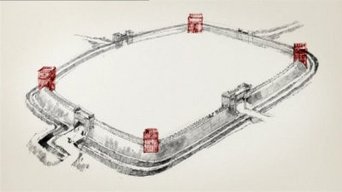
Nobody knows what happened immediately after the Romans arrived in 43 AD, because no Roman fort has been discovered in this part of South East England. Time Team are on a mission to find the missing link. Local archaeologist Paul Wilkinson believes he has already found a military ditch, which would surround such a fort. It's a prime site, right next to Watling Street. However geophysics cannot find any evidence for a ditch. So begins one of their most frustrating digs, directed by Neil Holbrook. Phil enlists in the Ermine Street Guard for a day. They are joined by Roman expert Tony Wilmott and pottery specialist Malcolm Lyne.
Episode 4 : Saxon Burials on the Ridge - South Carlton, Lincolnshire
January. 25,2004
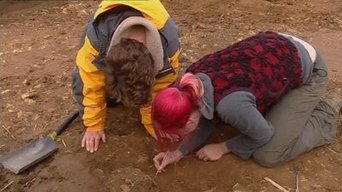
The team investigate a possible fifth century cemetery in a ploughed field, where they find a metal shield boss. One male skeleton is holding a drinking vessel. There are hints of much earlier activity as well, including a Bronze Age barrow. Using authentic tools, they fashion a Saxon shield. Conservator Dana Goodburn-Brown examines the details in the x-rays of the shield boss; while Phil and members of Regia Anglorum demonstrate how the shields are used in battle. They are joined by bone specialists Alice Roberts and Margaret Cox, who unearth some coloured beads among the remains.
Episode 3 : The Crannog in the Loch - Loch Migdale, Scottish Highlands
January. 18,2004
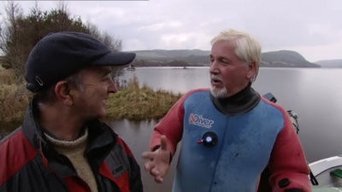
There's an island-ish round area of stones in Loch Migdale - could it be a crannog? 200 meters away on the banks is a small (12 m diameter) circular feature - is it a henge? Time Team rounds up some experts on the prehistoric and finds out. They set up a suction dredge to investigate two areas of the loch feature, and find wonderfully preserved timber, proving that it's a built structure and thus a crannog. GPS surveying and a tip from a local farmer finds the causeway, now underwater, leading to it Trenches within the henge show that the entrance and wooden posts within it pointed towards notable features in the landscape. Stewart looks for the find site of the Migdale Hoard.
Episode 2 : A Roman Bath House and Edwardian Folly - Whitestaunton Manor, Somerset
January. 11,2004
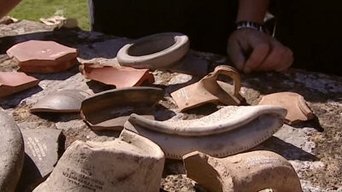
Next to the beautifully manicured lawns of Whitestaunton Manor in the Blackdown Hills of Somerset lies a patch of muddy weeds. Coins and pottery have been found here, and it is supposedly the site of a Roman villa. But archaeology student Freya Bowles thinks differently. The team first have to remove weeds and tree roots without the use of mechanical diggers, as it's a scheduled monument. They are also extremely limited as to the size of the excavation. Clearly there are Roman remains, but mixed up with Victorian or Edwardian garden features. Gradually the plan of a Roman bath house emerges. The team are joined by mosaic specialist David Neal and buildings historian Jonathan Foyle. Directed by technological historian Robert Spain, they build a full-size replica hypocaust complete with under-floor heating.
Episode 1 : In Search of the Brigittine Abbey - Syon House, London
January. 04,2004
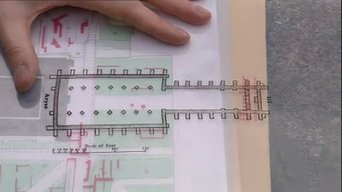
The team are on the trail of a medieval mystery. Founded by Henry V and built by his son Henry VI, Syon Abbey was a large, wealthy monastery for nuns of an obscure Swedish order. During the reign of Henry VIII it vanished. Its remains lie beneath the lawns of modern Syon House, designed by Capability Brown. What they find is on a huge scale. But there is disagreement as to what kind of building it was. After investigating the foundations of the House, Stewart and Jonathan reach an agreement on the extent of the church. They are joined by buildings historian Jonathan Foyle and monastic expert Barney Sloane.
Seasons

Season 21
After several years off air, creator Tim Taylor crowd-sourced a new series of the programme, making it available to watch on YouTube for free. While the format was revamped and included new presenters, many popular familiar faces returned, including Carenza Lewis, Helen Geake, Stewart Ainsworth, and John Gator.
Similar titles
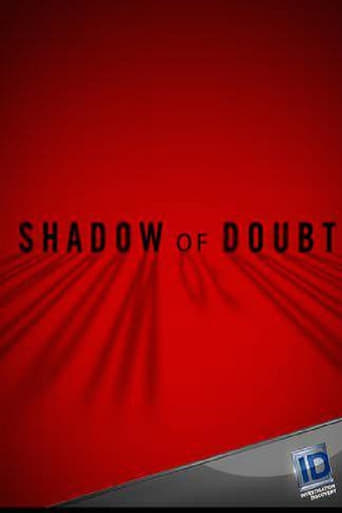
Shadow of Doubt
Shadow of Doubt delves into competing theories of complex crimes, which find witnesses and suspects pointing the finger at each other. In these exceptional cases, every possible account must be considered before the shocking final truth can be discovered. Shadow of Doubt forces us to examine who we believe and why.
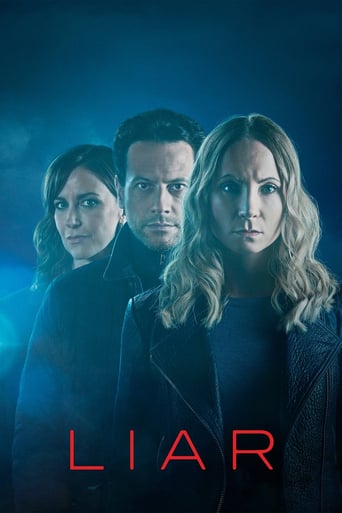
AMC+
Liar
A teacher and a surgeon are rocked by scandalous accusations after they enjoy a seemingly innocent date.
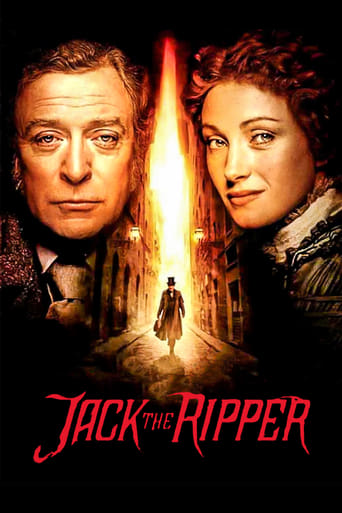
Jack the Ripper
Jack the Ripper is a 1988 two-part television film/miniseries portraying a fictionalized account of the hunt for Jack the Ripper, the unidentified serial killer responsible for the Whitechapel murders of 1888. The series coincided with the 100th anniversary of the murders.
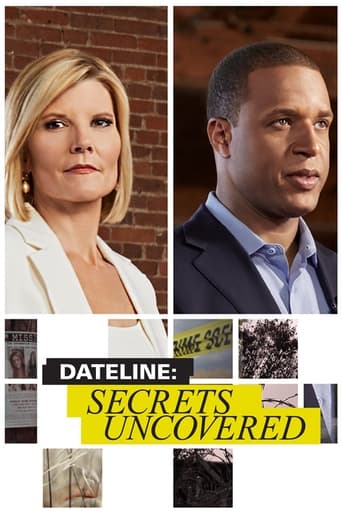
Dateline: Secrets Uncovered
For more than 25 years, Dateline has brought viewers investigations into some of biggest mysteries in America. This entry in the franchise takes a second look at some of the most mysterious cases of recent history. It explores the stories through firsthand accounts told by people who are close to the crime, including investigators who dedicated their time to the cases and family members who are still trying to confront the tragedies that befell their loved ones.
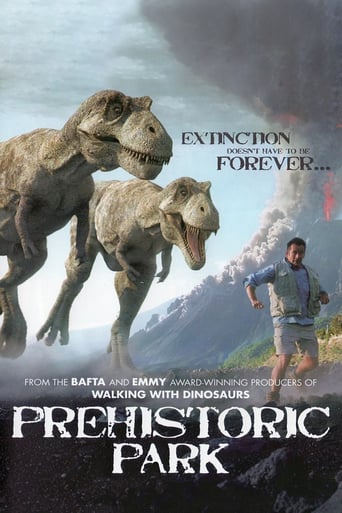
Prehistoric Park
Using his knowledge of today’s animal kingdom and the latest research, wildlife adventurer Nigel Marven uses a time portal to take him into the past, on a quest to rescue long lost prehistoric creatures.
Related
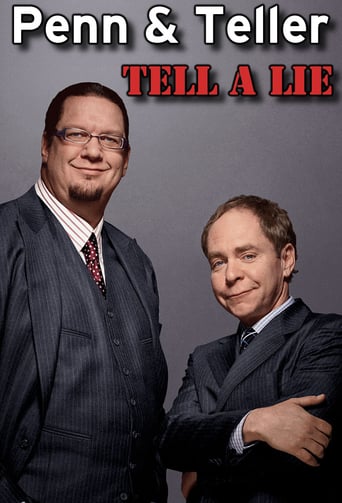
Penn & Teller Tell a Lie
Penn & Teller bring their unique vision of the world in a new interactive series with a twist. In each episode, Penn & Teller make up to seven outrageous claims. While most of the wildly unbelievable stories are absolutely, positively true - one of them is a BIG FAT LIE.
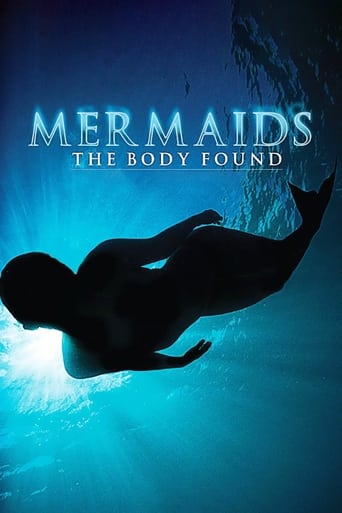
Mermaids: The Body Found
Mermaids: The Body Found is a mockumentary television program styled as a documentary originally aired on American TV channels Animal Planet (May 27, 2012) and Discovery Channel (June 17, 2012). It tells a story of a scientific team's investigative efforts to uncover the source behind mysterious underwater recordings of an unidentified marine body. The show presents the controversial aquatic ape hypothesis as evidence that mermaids exist, along with a digitally manufactured video. A sequel broadcast called Mermaids: The New Evidence aired May 26, 2013.

Why Would We Fall in Love Again?
The story revolves around Ghalia, who has problems with her husband, the famous director - Abdullah - and they separate from each other, then he meets Murad by chance at one of the parties and admires her, so he tries to approach her, but she is afraid of going through a failed emotional experience again.

Shaun the Sheep: Mossy Bottom Shorts
Join Shaun and the flock on an exciting new mini adventure series down on Mossy Bottom Farm. From sprout shooting with the naughty pigs, kite-flying catastrophes, to a game of table tennis which leads to an unexpected journey - whatever the comedic situation Shaun is certain to be leading the laughs.

Celebrity Game Face
Kevin Hart hosts a night of fun and games with celebrity couples, all playing remotely from their own homes; from trivia questions to physical challenges, each round will show a fresh, fun and unexpected side of them.
Top Streaming TV Show
#1

Grey's Anatomy
March. 27,2005
7.6
#2

A Teacher
November. 10,2020
6.9
#3

The Mandalorian
November. 12,2019
8.7
#4

Game of Thrones
April. 17,2011
9.2
#5

Station 19
March. 22,2018
7
#6
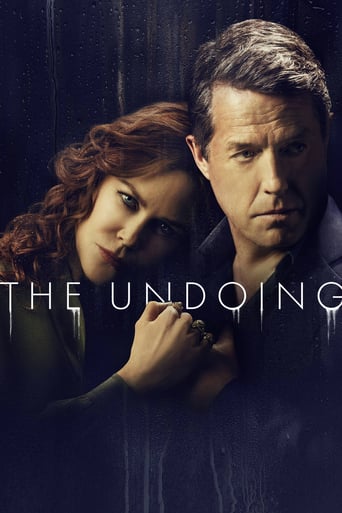
The Undoing
October. 25,2020
7.4
#7

Supernatural
September. 13,2005
8.4
#8

The Last Dance
April. 19,2020
9.1
#9

Euphoria
June. 16,2019
8.3
#10
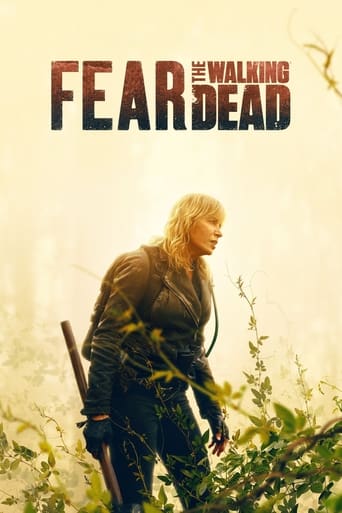
Fear the Walking Dead
August. 23,2015
6.8

